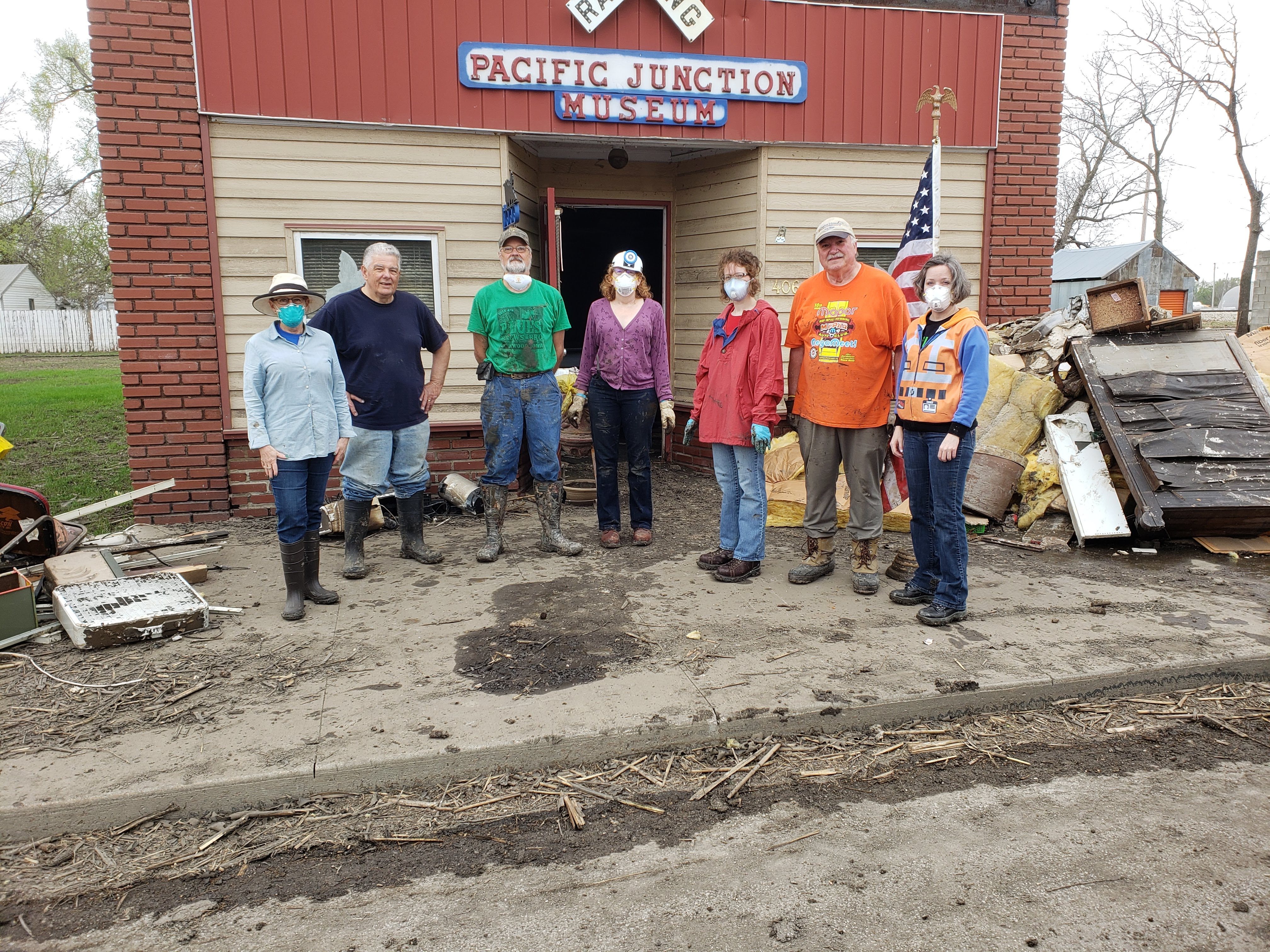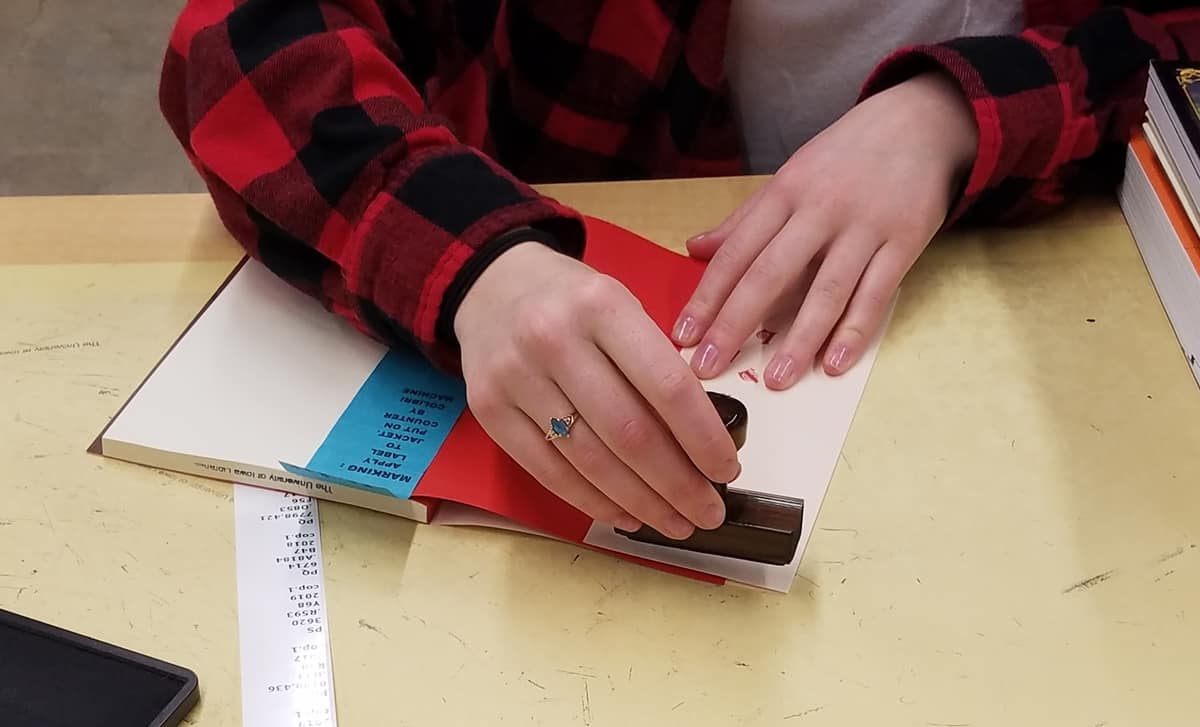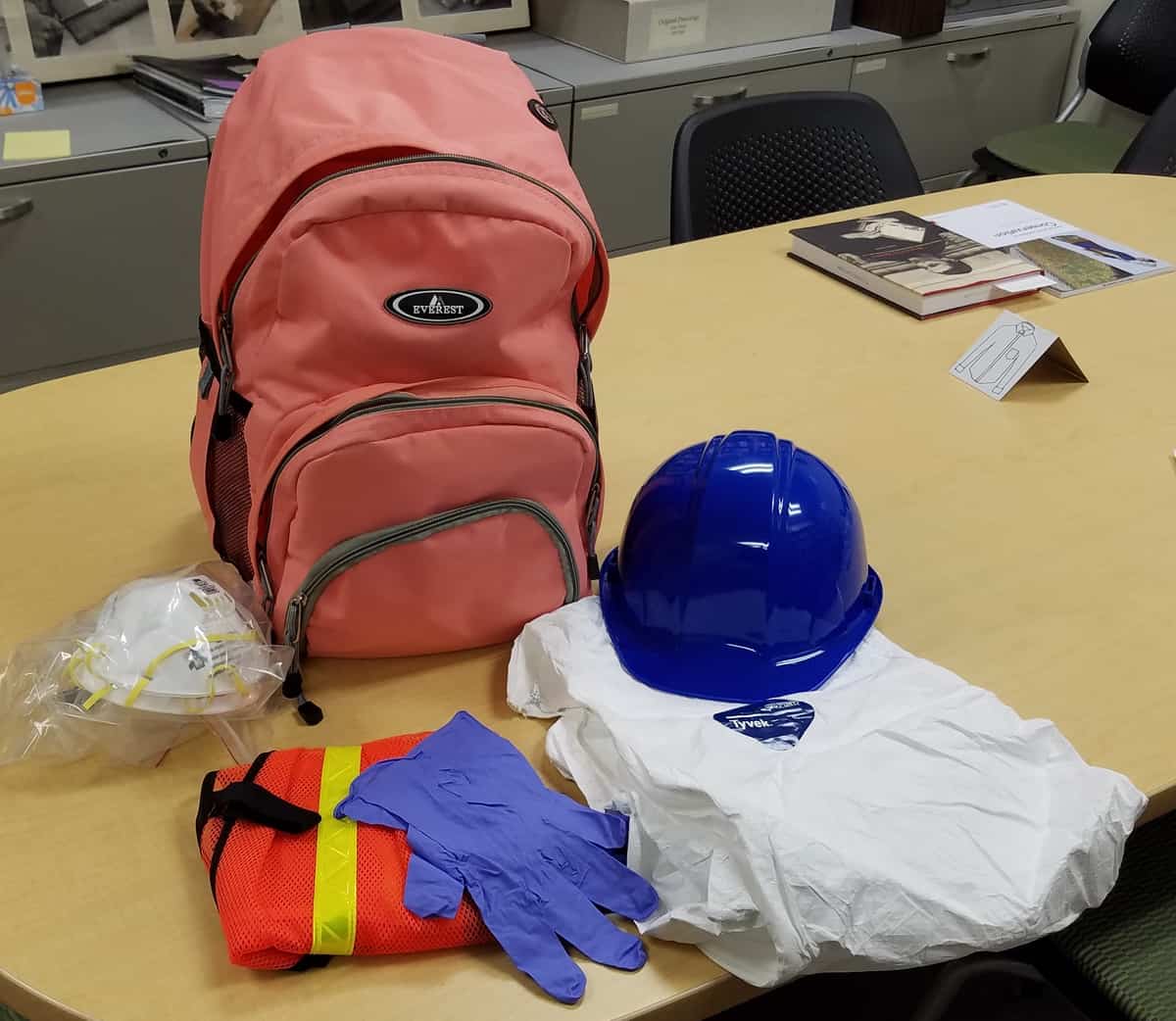On Monday, April 22, Iowa Museums, Archives, Libraries Emergency Response Team (IMALERT) members assisted with the retrieval and salvage of collection items in the flood-damaged Pacific Junction Railroad Museum (PJRM). We could not have had a more “perfect” flood recovery experience. The Mills County Historical Museum Director Steve Hunt from nearby Glenwood had everything well organized.
Category Archives: Materials, equipment and procedures
A student’s perspective on working in the library
The Preservation and Conservation department employs 19 students in positions ranging from digitization to book repair to conservation. Within the Marking unit, student employees mark new books to prepare them for patron use. We start by property stamping them, then we insert a security device, and mark them with an adhesive call number label. We also work with other media besides books, including CDs and DVDs. Marking students also work on other preservation projects as they arise.
Preservation Week 2019
This week is Preservation Week, which is sponsored by the Association for Library Collections & Technical Services (ALCTS), a branch of the American Library Association (ALA). Preservation Week is an opportunity to learn about and take action to preserve collections. The theme for this year’s celebration is “Preserving Your Family History” which emphasizes the importance of preserving the collections of families, individuals, and communities in addition to those in libraries, museums, and archives.
Mystery of the mismatched covers
About a month ago the conservation department received a book for repair from the John Martin Rare Book Room in the Hardin Library for the Health Sciences. Beth Stone, assistant conservator, noticed that the front cover of the book did not match the back cover. It was taller and wider than the text block and the leather did not match the back cover in color or design.
Making A/V collections more accessible
Brad Ferrier, digital projects librarian, coordinates transcription and caption for Audio/Video (A/V) materials in the library’s collection. “Transcription is converting the speech in an audio file into a written plain text document. Caption is converting the speech in a video file into text which is synced and appears on-screen with the video,” Ferrier explains.
Part Two: A Librarian’s Disaster Response Gear
By Nancy E Kraft: My Trunk Kit has expanded from a flashlight and a screw driver to include pliers, wrenches, screw drivers, a hammer, mallet, crowbar, string, twine, utility knives, caution tape, duct tape, gloves, scissors, flash Lights, a “head” light, and hiking boots. The crowbar is handy for prying swollen doors and drawers open. Wet books swell, become jammed into shelves, and often need to be tapped out with a mallet. Ideally, all items will have wood or rubber handles to protect from electrical conductivity. In addition to the trunk kit, I utilize whatever I can find at hand. Window screens are handy for drying out fabrics, thin paper and photographs. String or rope can be strung up between trees and CDs, DVDs, slides, photographs can be hung up to dry.
Part One: A Librarian’s Disaster Response Gear
By Nancy E Kraft: With the Mid-West Tool Collectors Association Fall meeting in Cedar Rapids, Iowa, and the fact that I assisted in responding to the flood of 2008, I thought it would be interesting to highlight the personal gear I use to respond to disasters to libraries and museums. The gear can be divided into three categories: personal protective equipment, response tools, and recovery tools.
Pagan heads to Puerto Rico for cultural heritage conservation project
Candida Pagan, project conservator, traveled to Puerto Rico in early February to participate in the Helping Puerto Rican Heritage Project (HPRH).
Puerto Rico faces specific preservation challenges due to the tropical climate. Salt and humidity, along with more catastrophic weather like hurricanes, pose issues for institutions that house archives and collections. HPRH seeks to educate participants about conservation efforts in Puerto Rico while also advising conservators about care and preservation of their collections.
Nancy Kraft travels to Berlin for ISO meeting
Nancy Kraft, Head of Preservation & Conservation, recently traveled to Berlin for an International Organization for Standardization (ISO) meeting. The meeting was one of many work sessions to draft and publish a new international standard for emergency preparedness and response plans. The standard addresses what libraries, archives, and museums should include in their disaster response plans and is adaptable for any disaster and any size organization. Since the standard is international the draft accounts for all kinds of disasters in different geographical locations. For example, in Iowa we must deal with floods and tornadoes, whereas California needs to think about earthquakes and forest fires.
In-house binding for quick access to course reserves
As part of the Preservation Department’s customer service focus, books that are placed on rush are processed faster so that patrons can have access to these materials sooner. Not long before this spring semester started, two unbound loose leaf textbooks needed to be placed on course reserves as soon as possible for student use. Books that are sent to the commercial bindery take four weeks to return, so Conservation Assistant Julie Smith decided to bind these rush textbooks by hand in-house.









